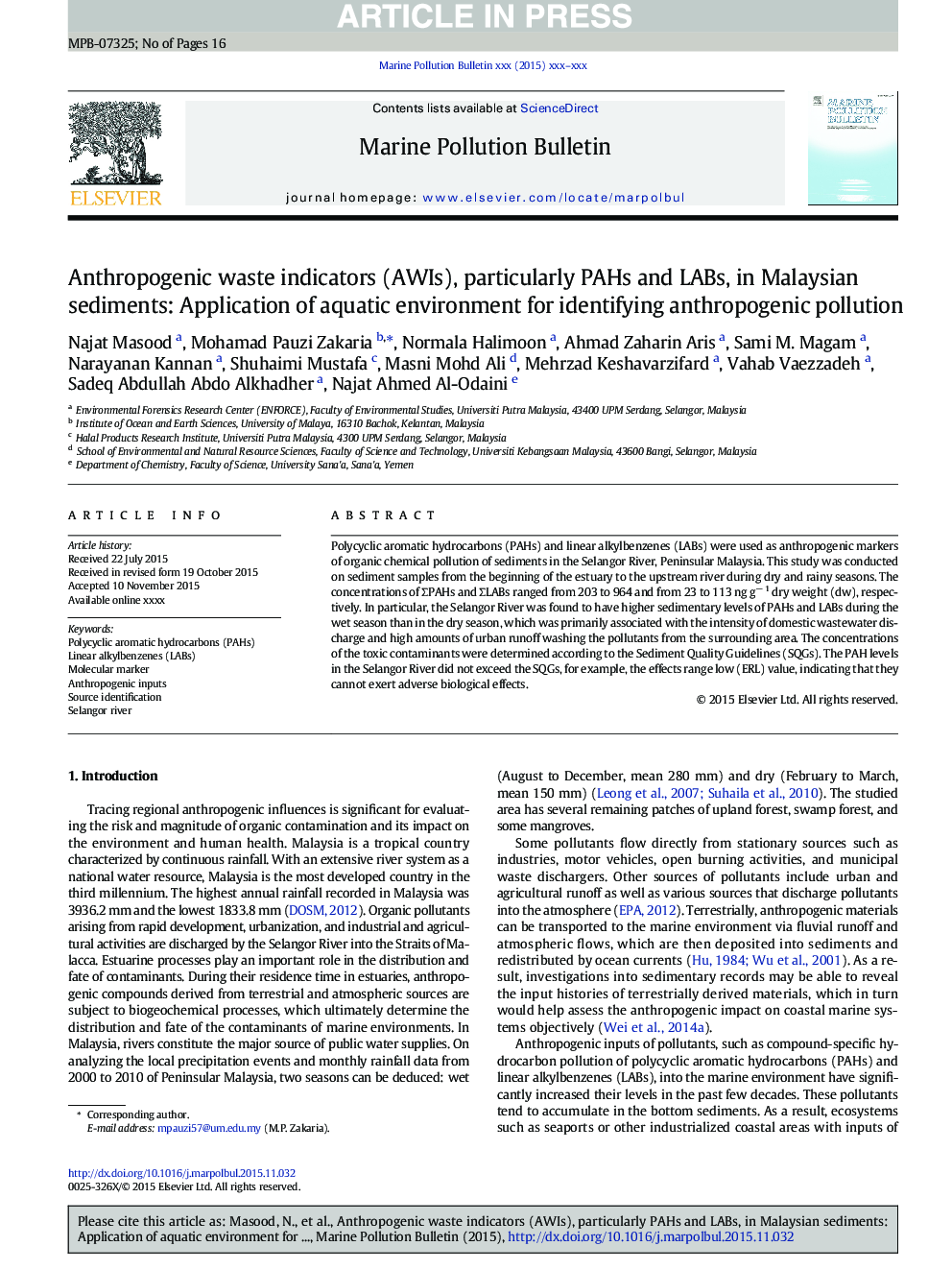| Article ID | Journal | Published Year | Pages | File Type |
|---|---|---|---|---|
| 6356327 | Marine Pollution Bulletin | 2016 | 16 Pages |
Abstract
Polycyclic aromatic hydrocarbons (PAHs) and linear alkylbenzenes (LABs) were used as anthropogenic markers of organic chemical pollution of sediments in the Selangor River, Peninsular Malaysia. This study was conducted on sediment samples from the beginning of the estuary to the upstream river during dry and rainy seasons. The concentrations of Æ©PAHs and Æ©LABs ranged from 203 to 964 and from 23 to 113 ng gâ 1 dry weight (dw), respectively. In particular, the Selangor River was found to have higher sedimentary levels of PAHs and LABs during the wet season than in the dry season, which was primarily associated with the intensity of domestic wastewater discharge and high amounts of urban runoff washing the pollutants from the surrounding area. The concentrations of the toxic contaminants were determined according to the Sediment Quality Guidelines (SQGs). The PAH levels in the Selangor River did not exceed the SQGs, for example, the effects range low (ERL) value, indicating that they cannot exert adverse biological effects.
Keywords
Related Topics
Physical Sciences and Engineering
Earth and Planetary Sciences
Oceanography
Authors
Najat Masood, Mohamad Pauzi Zakaria, Normala Halimoon, Ahmad Zaharin Aris, Sami M. Magam, Narayanan Kannan, Shuhaimi Mustafa, Masni Mohd Ali, Mehrzad Keshavarzifard, Vahab Vaezzadeh, Sadeq Abdullah Abdo Alkhadher, Najat Ahmed Al-Odaini,
